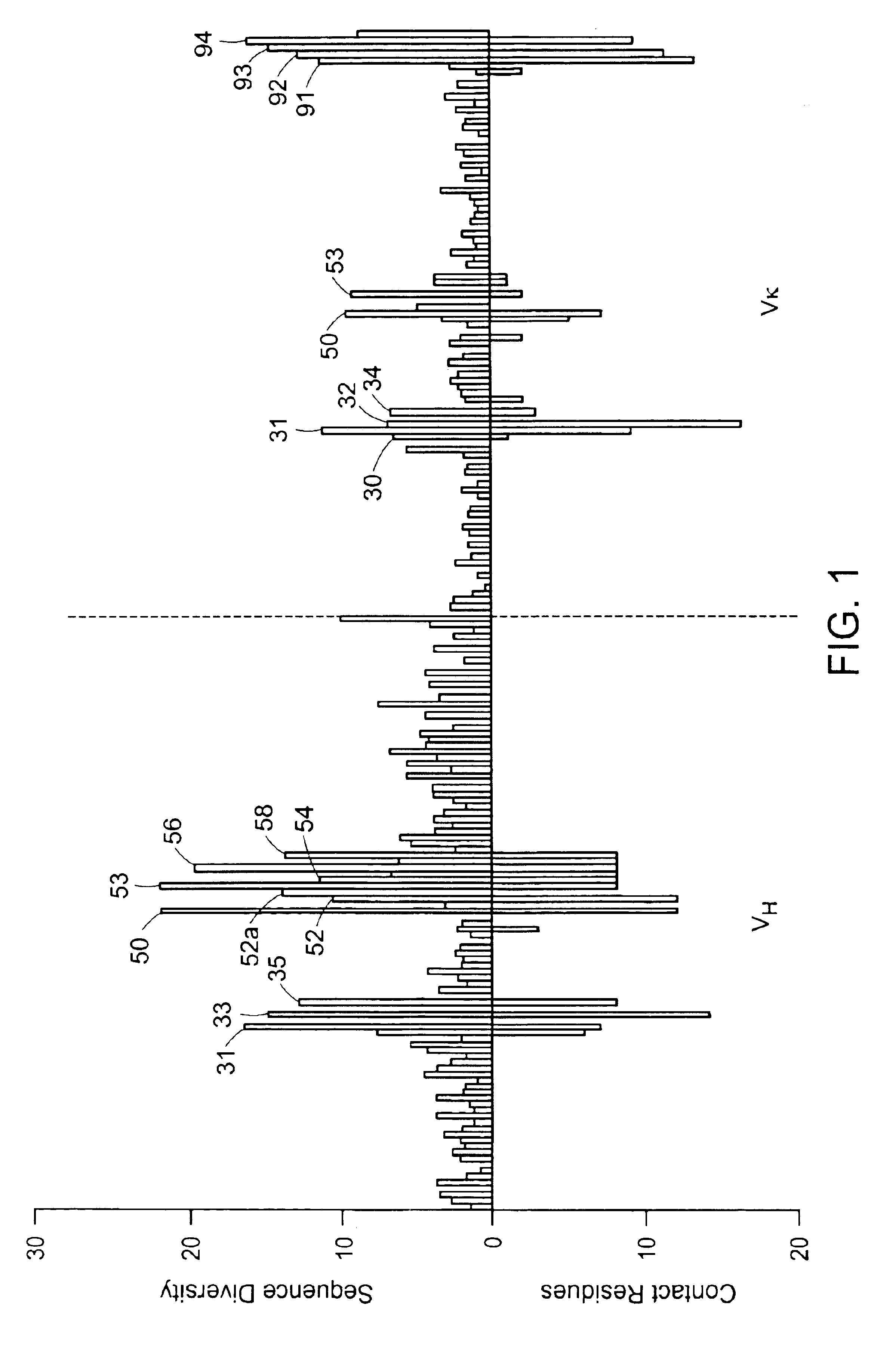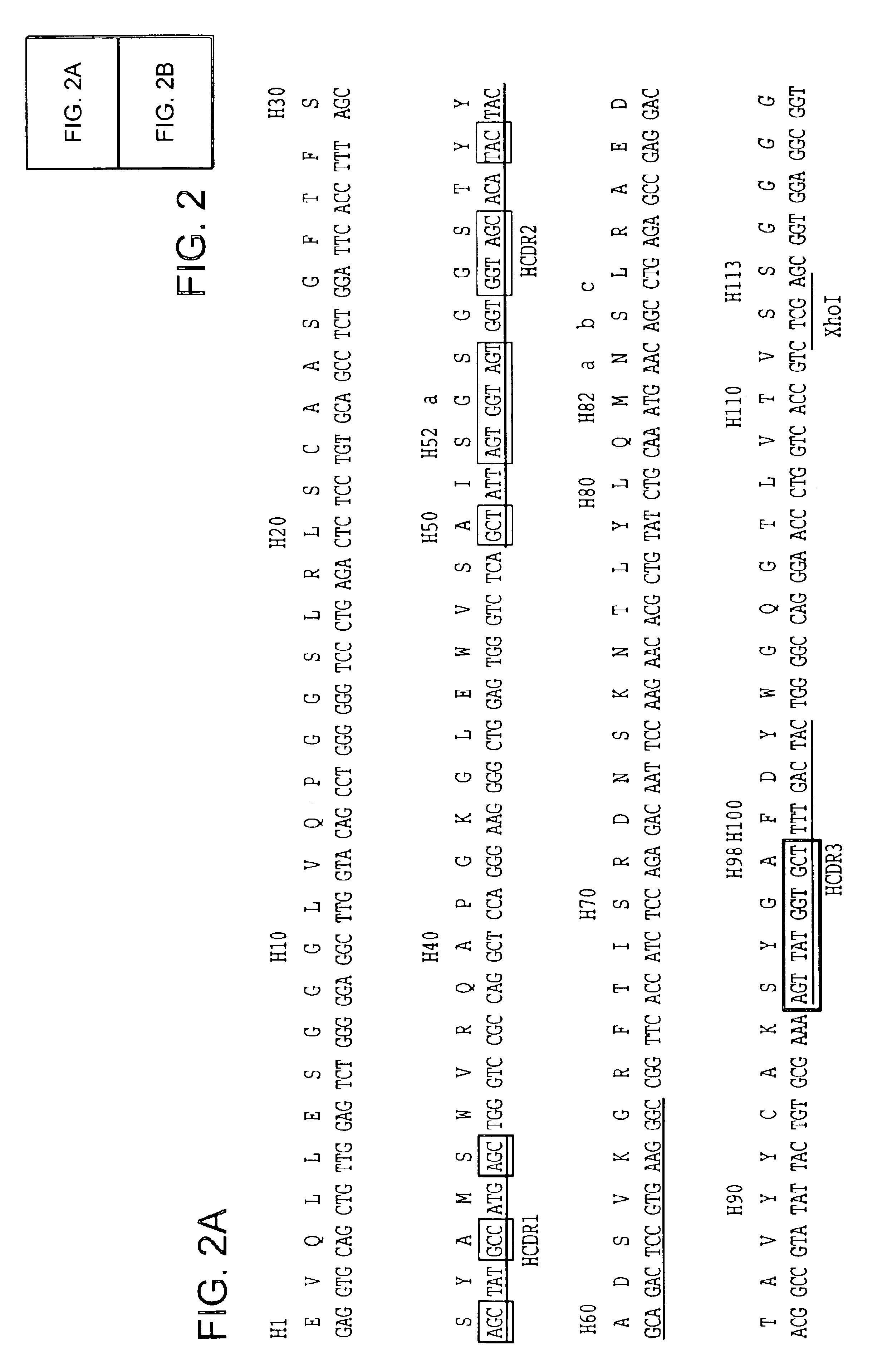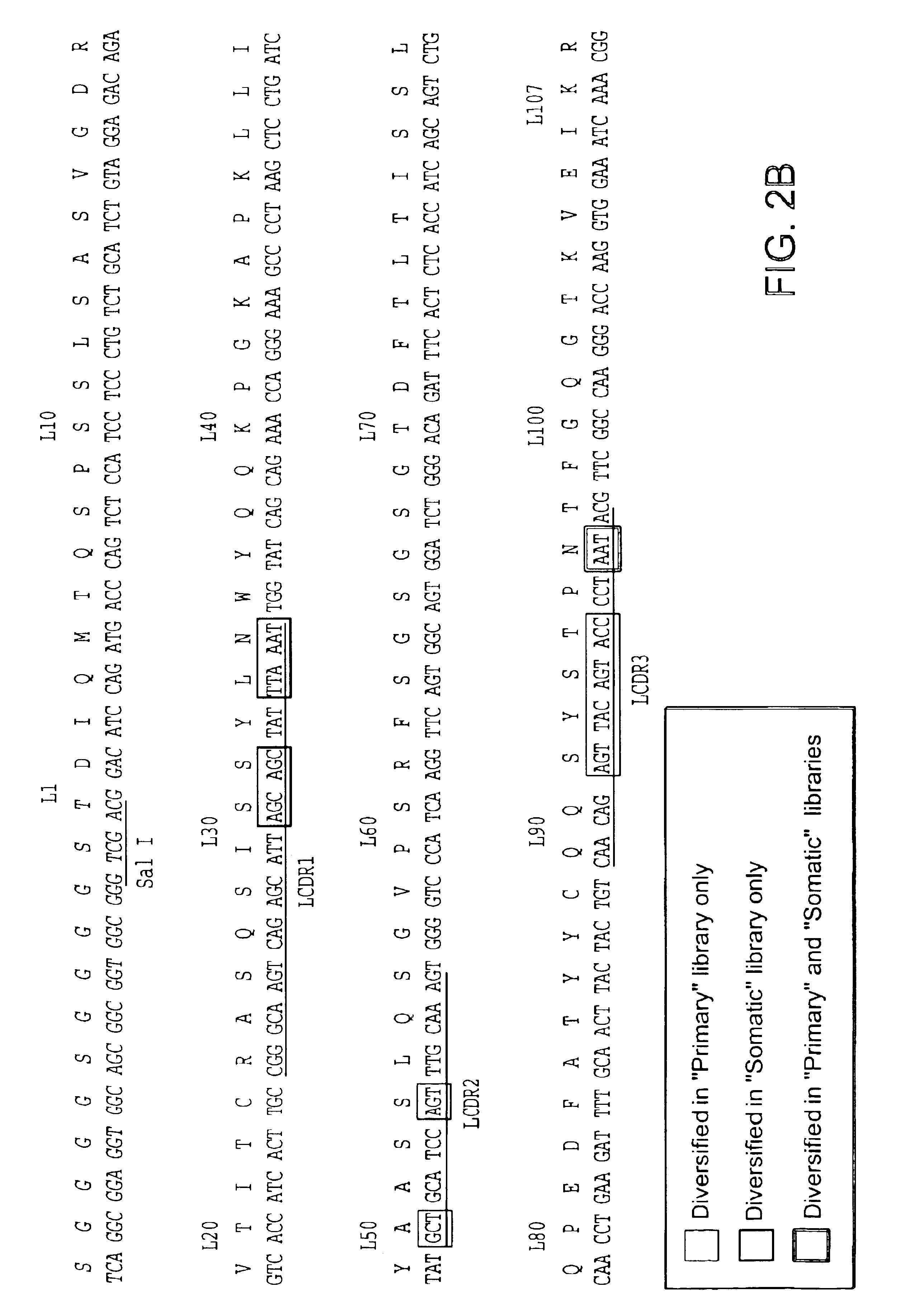Method to screen phage display libraries with different ligands
a technology of phages and libraries, applied in the field of polypeptide repertoire selection, can solve the problems of antibody selection from these libraries that is not well expressed, cannot fold correctly, and is therefore non-functional, and achieves the effects of consensus frameworks, poor expression of antibodies, and low expression of antibodies
- Summary
- Abstract
- Description
- Claims
- Application Information
AI Technical Summary
Benefits of technology
Problems solved by technology
Method used
Image
Examples
example 1
[0187]Antibody Library Design
[0188]A. Main-chain Conformation
[0189]For five of the six antigen binding loops of human antibodies (L1, L2, L3, H1 and H2) there are a limited number of main-chain conformations, or canonical structures ((Chothia et al. (1992) J. Mol. Biol., 227: 799; Tomlinson et al. (1995) EMBO J., 14: 4628; Williams et al. (1996) J. Mol. Biol., 264: 220). The most popular main-chain conformation for each of these loops is used to provide a single known main-chain conformation according to the invention. These are: H1-CS 1 (79% of the expressed repertoire), H2-CS 3 (46%), L1-CS 2 of Vκ (39%), L2-CS 1 (100%), L3-CS 1 of Vκ (36%). The H3 loop forms a limited number of main-chain conformations for short loop lengths (Martin et al. (1996) J. Mol. Biol., 263: 800; Shirai et al (1996) FEBS Letters, 399: 1). Thus, where the H3 has a CDR3 length (as defined by Kabat et al. (1991). Sequences of proteins of immunological interest, U.S. Department of Health and Human Services) o...
example 2
Library Construction and Selection with the Generic Ligands
[0195]The “primary” and “somatic” libraries were assembled by PCR using the oligonucleotides listed in Table 1 and the germline V gene segments DPK9 (Cox et al. (1994) Eur. J. Immunol., 24: 827) and DP-47 (Tomlinson et al. (1992) J. Mol. Biol., 227: 7768). Briefly, first round of amplification was performed using pairs of 5′ (back) primers in conjunction with NNK or DVT 3′ (forward) primers together with the corresponding germline V gene segment as template (see Table 1). This produces eight separate DNA fragments for each of the NNK and DVT libraries. A second round of amplification was then performed using the 5′ (back) primers and the 3′ (forward) primers shown in Table 1 together with two of the purified fragments from the first round of amplification. This produces four separate fragments for each of the NNK and DVT libraries (a “primary” VH fragment, 5A; a “primary” Vκ fragment, 6A; a “somatic” VH fragment, 5B; and a “...
example 3
[0198]Library Selection Against Target Ligands
[0199]The “primary” and “somatic” NNK libraries (without pre-selection) were separately selected using five antigens (bovine ubiquitin, rat BIP, bovine histone, NIP-BSA and hen egg lysozyme) coated on immunotubes at various concentrations. After 2-4 rounds of selection, highly specific antibodies were obtained to all antigens except hen egg lysozyme. Clones were selected at random for sequencing demonstrating a range of antibodies to each antigen (FIG. 4).
[0200]In the second phase, phage from the pre-selected NNK and DVT libraries were mixed 1:1 to create a single “primary” library and a single “somatic” library. These libraries were then separately selected using seven antigens (FITC-BSA, human leptin, human thyroglobulin, BSA, hen egg lysozyme, mouse IgG and human IgG) coated on immunotubes at various concentrations. After 2-4 rounds of selection, highly specific antibodies were obtained to all the antigens, including hen egg lysozyme ...
PUM
| Property | Measurement | Unit |
|---|---|---|
| temperatures | aaaaa | aaaaa |
| temperatures | aaaaa | aaaaa |
| temperatures | aaaaa | aaaaa |
Abstract
Description
Claims
Application Information
 Login to View More
Login to View More - R&D
- Intellectual Property
- Life Sciences
- Materials
- Tech Scout
- Unparalleled Data Quality
- Higher Quality Content
- 60% Fewer Hallucinations
Browse by: Latest US Patents, China's latest patents, Technical Efficacy Thesaurus, Application Domain, Technology Topic, Popular Technical Reports.
© 2025 PatSnap. All rights reserved.Legal|Privacy policy|Modern Slavery Act Transparency Statement|Sitemap|About US| Contact US: help@patsnap.com



